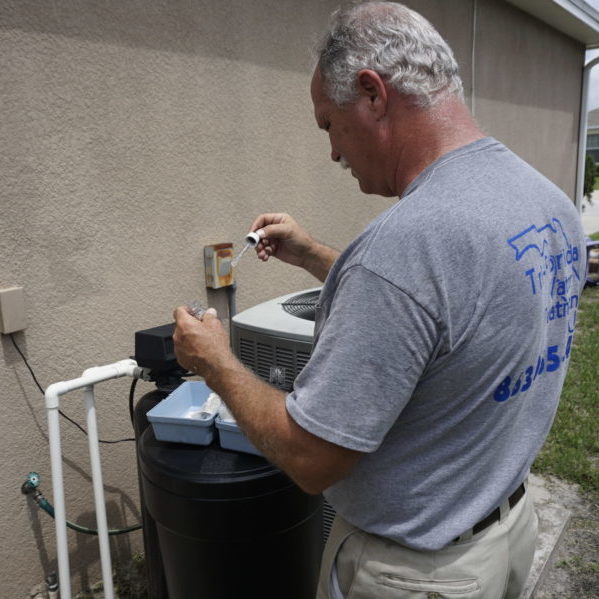How to Remove Iron In Your Well Water
City water systems have extensive filtration systems that remove many contaminants before the water gets to your home. Those outside of city limits often rely on well water systems. These pull water from deep in the ground. However, the quality of the supply will often vary greatly, with many houses being supplied by wells that have significant iron deposits in them. There are several ways to remove iron from well water, but first, let’s look at what iron is and if it poses any safety hazards to your family’s health.
 What is iron?
What is iron?
At its core, iron is an element. If you recall the Periodic Table from school, its symbol is Fe and one of the nutrients we need to survive. Iron is also corrosive and can stain clothes, dishes, fingernails, and even our skin.
Is it dangerous in your water?
If we need it to survive, does that mean iron isn’t dangerous? Generally speaking, yes. However, there is a form known as bacterial iron. This is harmful, as the bacterial microbes bond to the iron elements in your water and can cause a plethora of health issues.
Performing a water test
For various reasons, this is why we encourage all of our Tri-Florida Water Treatment customers to perform a water test before setting up any kind of filtration system. By doing so, we can help you ensure you have the right solution in place for your unique water situation.
This brings us to our three primary solutions to remove iron from well water: installing a water softener, installing other filtration systems, or utilizing chlorine.
Solution #1: Installing a water softener
Installing a water softener is the most common method to remove iron from well water. Using the correct mix and type of salt, a water softener can help mitigate the iron orange discoloration while also providing you with better-tasting water for your home.
Solution #2: Other types of filtration systems
Sediment filtration systems are the second most common method. These contain various types of media that perform similar functions. Those include:
• Sediment filters to remove ferric iron;
• Oxidizing filters, such as Manganese greensand or birm, and;
• KDF, a type of zinc filter utilizing cartridges.
Solution #3: Chlorine
The final solution is typically only used if you have bacterial iron in your water. Chlorine shocks are common with older setups, often being grandfathered in as they predate current FDA requirements. These are essentially high doses of chlorine (up to 200ppm), though if a shock doesn’t adequately kill the bacteria you may need a constant chlorination system.
When in doubt, turn to the professionals
Most contaminants are invisible to the naked eye. Water heavy with iron will appear orange, but can also contain dangerous bacterial iron. It’s impossible to know if your water is safe without a proper test, which is where we come in. Our team will gladly test your water, let you know whether it’s safe or not, and develop solutions to meet your needs.
Ready to get started? Then call Tri-Florida Water Treatment at 863-965-1439 or send us a message through our contact form.

